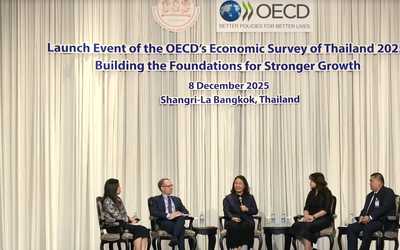Thailand’s economic growth has been sluggish, with real GDP growth lagging behind its regional peers. To effectively identify growth opportunities, anticipate labor market demands, and design appropriate policy responses, it is essential to develop a comprehensive understanding of several key areas. These include patterns in employment and production structures across sectors, trends in productivity trends and resource allocation, and the role of institutions and public policies--including industrial, fiscal, monetary, and regulatory domains--on these trends. Additionally, analyzing the projected development of major industries in comparison to international benchmarks, particularly within the context of current global trends is important.
- Estimating Thailand’s potential growth: which industries could drive new growth, and what policies are needed to support them?
- Evaluating historical impacts of industrial policies: lessons and implications
- Identifying barriers to high value-added job creation: what reforms are needed for sustainable long-term growth?
- Changing labor demand patterns: empirical estimation of past, present, and projected needs across sectors.







